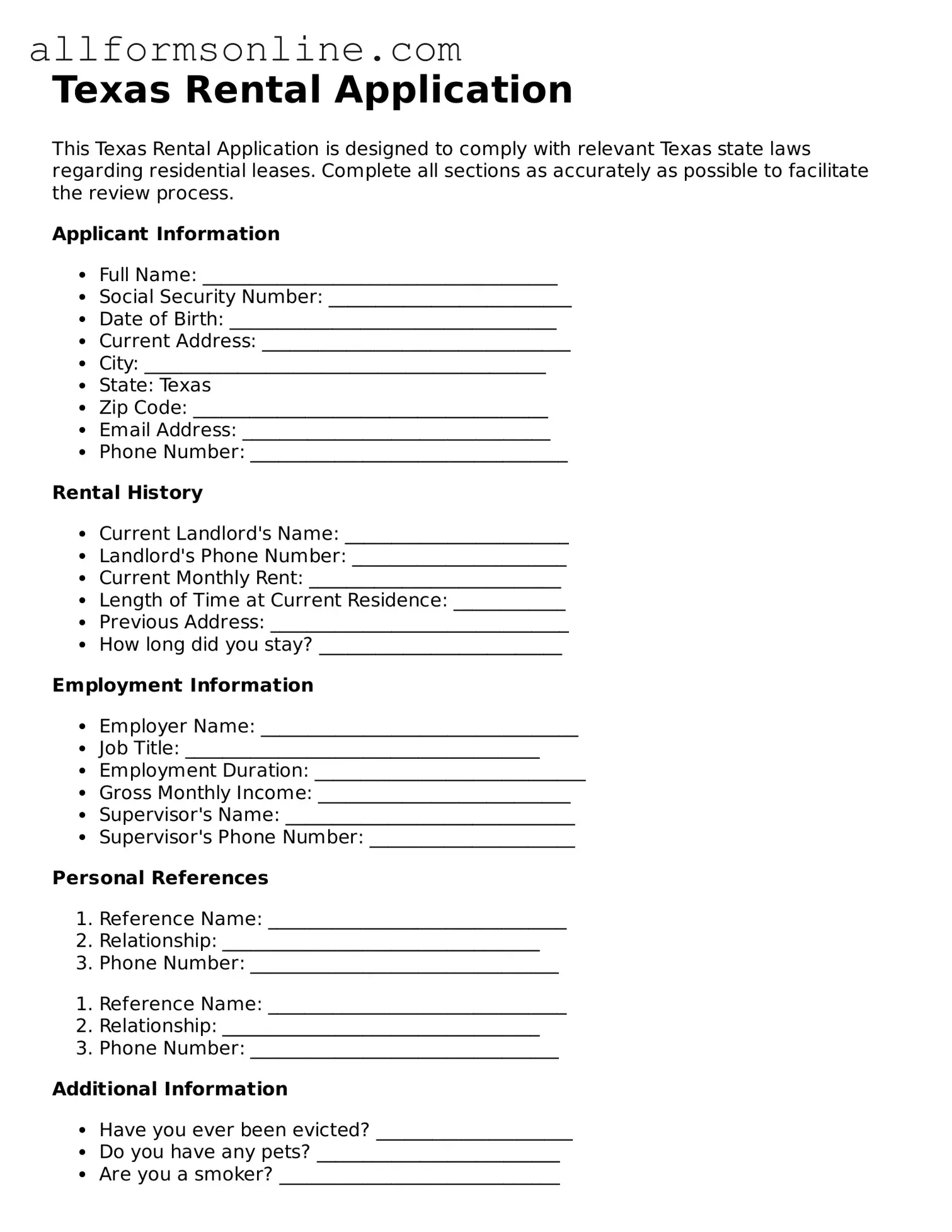What is a Texas Rental Application form?
The Texas Rental Application form is a document used by landlords and property managers to screen potential tenants. This form collects essential information about the applicant, including their personal details, rental history, employment status, and financial information. The goal is to assess the applicant's suitability for renting a property.
What information is typically required on the application?
Applicants usually need to provide their full name, contact information, social security number, and date of birth. Additionally, the form may request details about current and previous residences, employment history, income, and references. Some landlords may also ask for consent to conduct background and credit checks.
Is there a fee associated with the rental application?
Many landlords charge an application fee to cover the costs of processing the application and conducting background checks. This fee can vary widely depending on the property and location. It’s important for applicants to inquire about the fee upfront and understand what it covers.
How long does the application process take?
The time it takes to process a rental application can vary. Typically, landlords may take anywhere from a few hours to a few days to review applications. Factors influencing the timeline include the number of applications received, the thoroughness of background checks, and the responsiveness of references.
Can an application be denied, and what are common reasons?
Yes, a rental application can be denied. Common reasons for denial include insufficient income, poor credit history, previous evictions, or negative references from past landlords. Landlords must adhere to fair housing laws and provide a reason for the denial if requested by the applicant.
